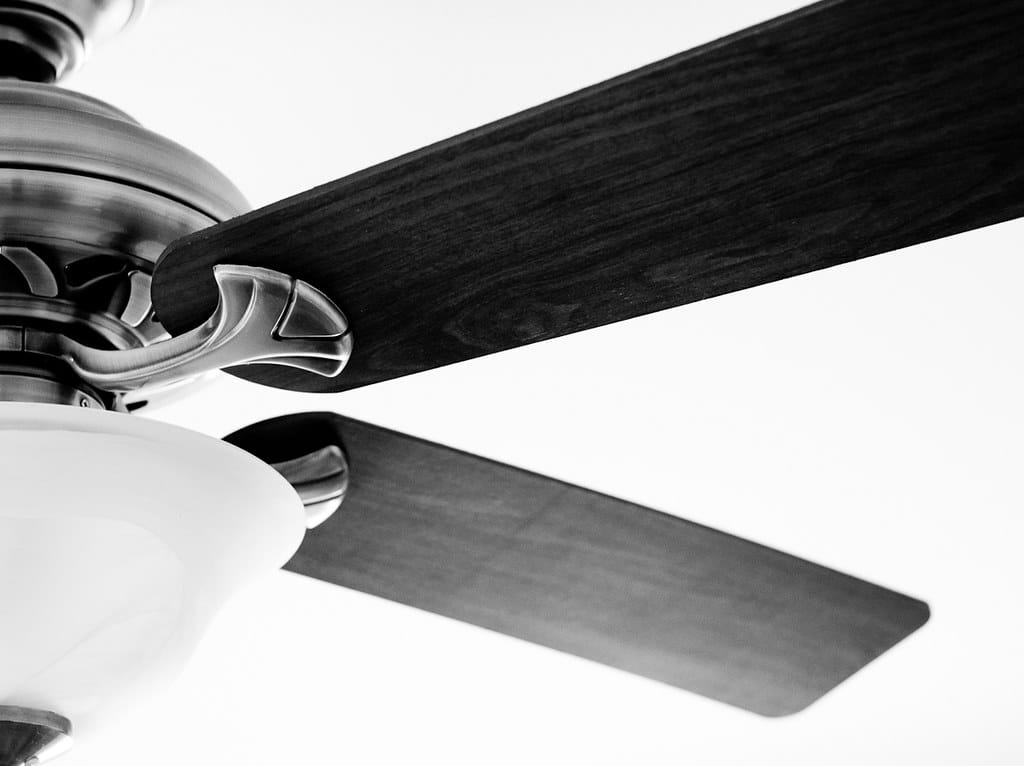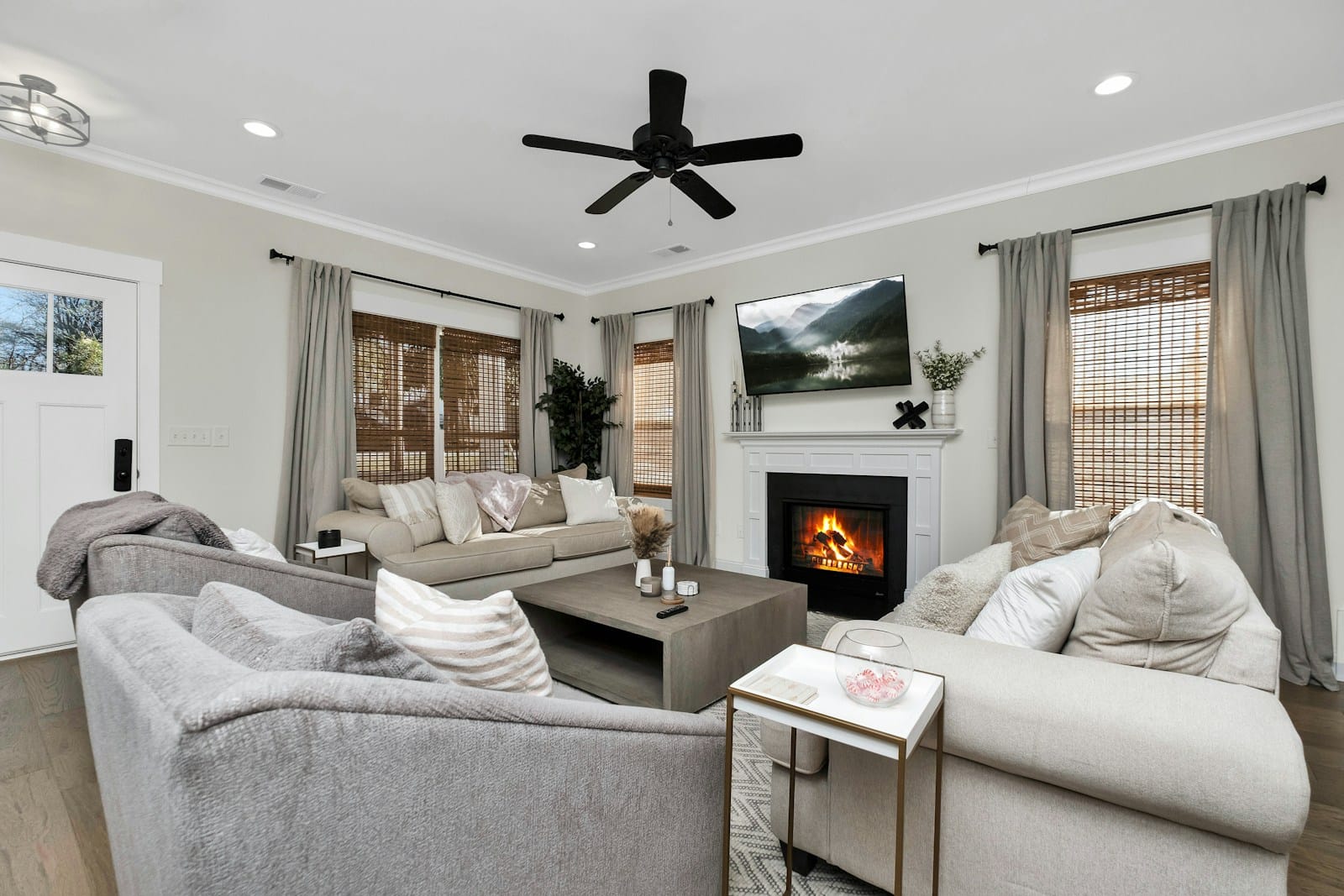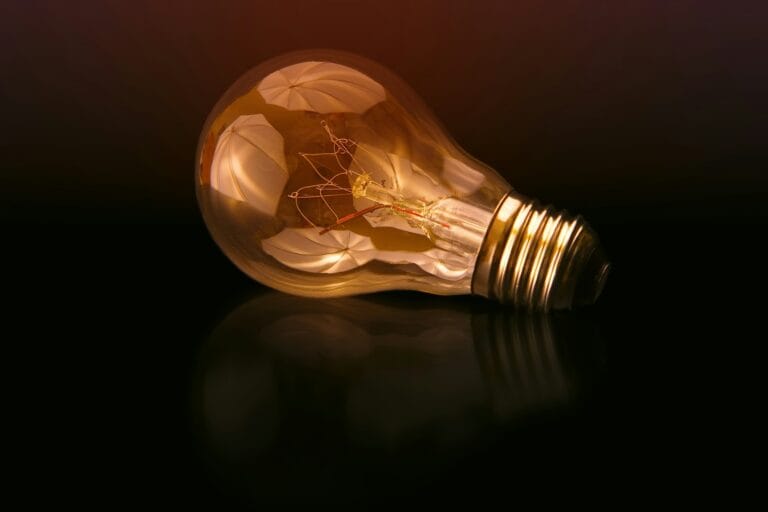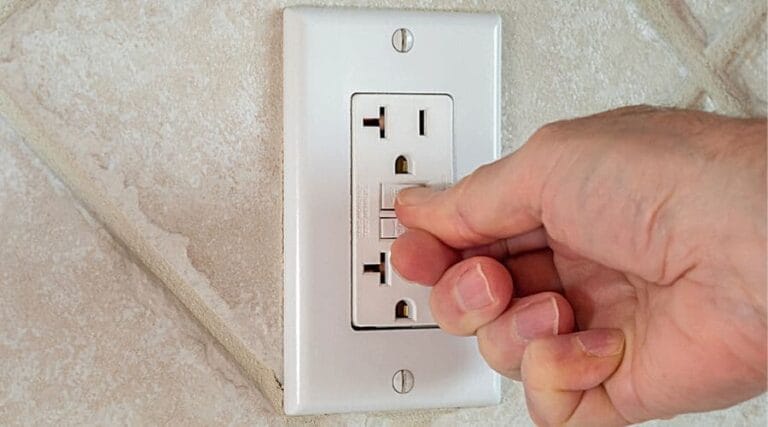It’s hot. The AC’s running. But something still feels… off.
Ever stop and wonder if your ceiling fan is even spinning the right way?
It’s a small detail most people overlook. But here’s the truth:
Your fan’s direction makes a big difference in how cool you feel, and how much you pay to stay that way.
First Things First: Fans Don’t Lower the Room Temperature
This surprises a lot of people.
Your ceiling fan doesn’t actually cool the air, it just makes you feel cooler.
Kind of like a breeze outside. It doesn’t drop the temperature, but it helps you chill out.
That’s called the wind-chill effect, and it only works if the fan is spinning the right way.
So, Which Way Should a Ceiling Fan Spin in Summer?
In the summer, your fan should spin counterclockwise.
That’s the setting that pushes air down, creating a noticeable breeze.
Here’s a quick test:
- Turn your fan on high
- Stand directly beneath it
- If you feel strong airflow hitting you, it’s set correctly (counterclockwise)
- If it’s barely moving air or pulling it upward, it’s spinning the wrong way (clockwise)
Still not sure? Look up. The blades should move up and to the left when you’re in summer mode.
Why It Works: The Wind-Chill Effect
When the blades spin counterclockwise, they push cool air down into the room.
That moving air hits your skin, speeds up evaporation, and makes you feel cooler, even if the room stays the same temperature.
It’s not magic. It’s airflow.
In fact, using your ceiling fan correctly can make it feel 4–6°F cooler, even if your thermostat doesn’t change.
And that means you can bump the AC up a few degrees and still stay comfortable.
How to Change the Fan Direction
Most ceiling fans have a small switch on the side of the motor housing. Flip it to change the direction.
A few tips:
- Always turn the fan off first
- Flip the switch to reverse it
- Turn it back on and test the airflow
Some newer fans have remote controls or app settings where you can change direction digitally.
If yours doesn’t have any of that, no worries. That little manual switch does the job just fine.

Summer vs. Winter Fan Settings
Let’s do a quick side-by-side:
| Season | Spin Direction | Effect |
|---|---|---|
| Summer | Counterclockwise | Pushes air down, creates breeze |
| Winter | Clockwise (low) | Circulates warm air without draft |
In the winter, warm air rises and sits near the ceiling. Reversing the fan to clockwise helps pull that warm air down the walls, without blowing it right on you.
But for summer? Counterclockwise is what you want.
What If My Fan Doesn’t Have a Reverse Switch?
If you’ve got an older or cheaper fan model with no reverse function, you’ve got a few options:
- Replace the fan with a newer one (they’re more energy-efficient too)
- Use standing or box fans to create airflow in key rooms
- Rearrange furniture to make better use of airflow paths
If the room still feels hot no matter what, the issue might be airflow from the AC, not the fan. Worth checking that out too.
Energy Savings: Real Numbers, Real Impact
Let’s say you normally set your AC to 72°F.
With the fan spinning counterclockwise, you bump it up to 76°F, but you still feel comfortable.
That 4-degree difference can drop your energy usage by 10–15% or more, depending on your climate and insulation.
Now imagine that savings stretched over three or four hot months. It adds up.
Plus, fans use way less energy than air conditioning. Like, pennies per day.
Don’t Fall for These Ceiling Fan Myths
Let’s clear up a few common misconceptions.
Myth 1: Fans cool the room
Nope. They cool people, not rooms. Turn them off when no one’s in the room.
Myth 2: Direction doesn’t matter
Actually, it matters a lot. One direction cools. The other circulates warm air.
Myth 3: Speed is more important than direction
Speed helps, but only if the air is moving in the right direction.
How to Use Fans for Maximum Comfort
A ceiling fan is just one part of the picture. Here’s how to make it more effective:
- Use it with your AC, not instead of it
- Keep blades dust-free to improve airflow
- Install fans in upstairs rooms to push heat down and out
- Use blackout curtains to block heat during the day
- Don’t forget about attic ventilation, hot air rises
Even something simple like keeping doors open between rooms can help the air move more freely.
A Quick Real-Life Example
We worked with a homeowner in Santa Rosa. They had a big open-concept living room with high ceilings. AC was running hard, but it still felt stuffy.
After reversing the ceiling fan (it had been spinning clockwise by default), they raised the thermostat from 70°F to 75°F and barely noticed the difference, except in their energy bill.
They saved around $60 over two summer months, just from that one tweak.
Final Thoughts
If you’ve never touched your ceiling fan’s direction switch, don’t feel bad. Most people haven’t.
But now that you know?
Set it to spin counterclockwise during the summer. You’ll feel cooler, spend less on energy, and your home will just feel better overall.
Want help installing a fan, updating an old one, or fixing a fan that’s not doing its job?
Old Town Electric has your back.
We’ve helped hundreds of homeowners optimize their homes for comfort and efficiency, ceiling fans included.
Book your free in-home evaluation today and let’s get your home summer-ready.



